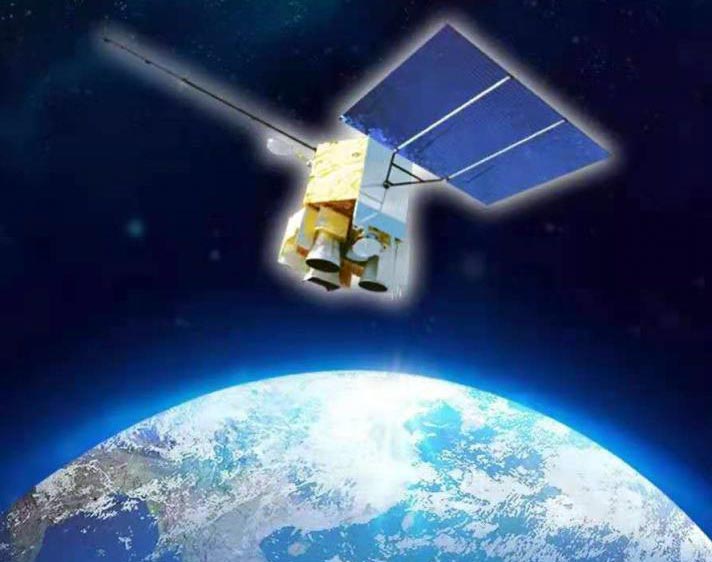Local severe storm forecasts proofed by using a new Hybrid OSSE method

Fengyun-4B, the first operational geostationary weather satellite carrying hyperspectral IR sounder called GIIRS (Geostationary Interferometric InfraRed Sounder), was launched on 3 June 2021.
Credit: China Meteorological Administration
Geostationary Earth Orbit Hyperspectral Infrared Radiance data improve local severe storm forecasts proofed by using a new Hybrid OSSE method.
Since the era of meteorological satellites began in the 1950s, continuous remote sensing instrument improvements have elevated Earth science and have significantly increased available atmospheric observations. Likewise, scientists have made considerable advancements in understanding Earth’s atmosphere, climate, and environment. Furthering growth of atmospheric science within the last 20 years, satellite-based infrared (IR) sounders onboard low Earth orbiting (LEO) satellites have provided high spectral (or hyperspectral) IR radiances. These sounders can determine small differences in reflected IR wavelengths, which help identify different targets of the atmosphere. These data have significantly improved global numerical weather prediction (NWP) modelling and forecasting.
Despite global coverage, each LEO sounder provides observations only twice per day for a given location. However, the hyperspectral IR sounders from geostationary Earth orbiting (GEO) satellites can provide higher resolution 4-D temperature (including time), moisture, and dynamic motion information needed to initialize, or start a model simulation. To accurately reflect atmospheric changes throughout an entire 24-hour period, LEO satellites can provide more frequent data updates for NWP models to use.
Scientists are developing data assimilation methods for NWP models that will increase the quality of initialization data from satellites. The Observing System Simulation Experiment (OSSE) is designed to use data assimilation to investigate the potential impact of future atmospheric observing systems. Traditional OSSE processes require significant effort to compute, simulate, and calibrate information, then assimilate the data to produce a forecast. Therefore, model meteorologists are working to make this process more efficient.
“We studied the added-value from a GEO-hyperspectral IR sounder using the hybrid OSSE method.” said Prof. Jun Li, a distinguished scientist with the University of Wisconsin-Madison Cooperative Institute for Meteorological Satellite Studies.
Compared to the traditional OSSE, in a hybrid OSSE, most of the data are real observations, except for observations from new sensors, which are simulated frequently through small grid, high resolution global atmospheric analysis or reanalysis. A detailed proposal of hybrid OSSE applications is included in a new paper published in Advances in Atmospheric Sciences, which is also part of a special issue on Fengyun Meteorological Satellites: Data, Application and Assessment
Before they assessed the impact of the new method, Prof. Li and his team had to validate simulated radiances from the new GEO hyperspectral IR sensor to verify that simulating new sensor data would work in the hybrid OSSE system. They used two local severe storms cases from 2018 and 2019 in the Great Plains and Midwestern United States to evaluate the value-added impacts from the GEO hyperspectral IR data.
“We are glad to find improved atmospheric temperature, moisture, and precipitation forecasts, along with some improvements in the wind forecasts.” commented Prof. Li regarding the research results.
Overall, the team’s impact study presents added value, resulting in a 5% Root Mean Square Error (RMSE) reduction when GEO hyperspectral IR data are used in lieu of LEO data. This indicates potential applications of a GEO hyperspectral IR sounder that may improve local severe storm forecasts.
Media Contact
All latest news from the category: Earth Sciences
Earth Sciences (also referred to as Geosciences), which deals with basic issues surrounding our planet, plays a vital role in the area of energy and raw materials supply.
Earth Sciences comprises subjects such as geology, geography, geological informatics, paleontology, mineralogy, petrography, crystallography, geophysics, geodesy, glaciology, cartography, photogrammetry, meteorology and seismology, early-warning systems, earthquake research and polar research.
Newest articles

Innovative 3D printed scaffolds offer new hope for bone healing
Researchers at the Institute for Bioengineering of Catalonia have developed novel 3D printed PLA-CaP scaffolds that promote blood vessel formation, ensuring better healing and regeneration of bone tissue. Bone is…

The surprising role of gut infection in Alzheimer’s disease
ASU- and Banner Alzheimer’s Institute-led study implicates link between a common virus and the disease, which travels from the gut to the brain and may be a target for antiviral…

Molecular gardening: New enzymes discovered for protein modification pruning
How deubiquitinases USP53 and USP54 cleave long polyubiquitin chains and how the former is linked to liver disease in children. Deubiquitinases (DUBs) are enzymes used by cells to trim protein…



